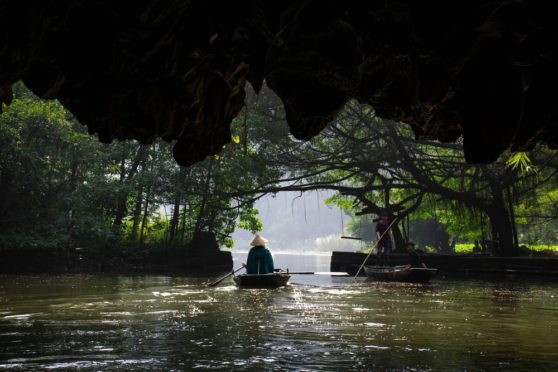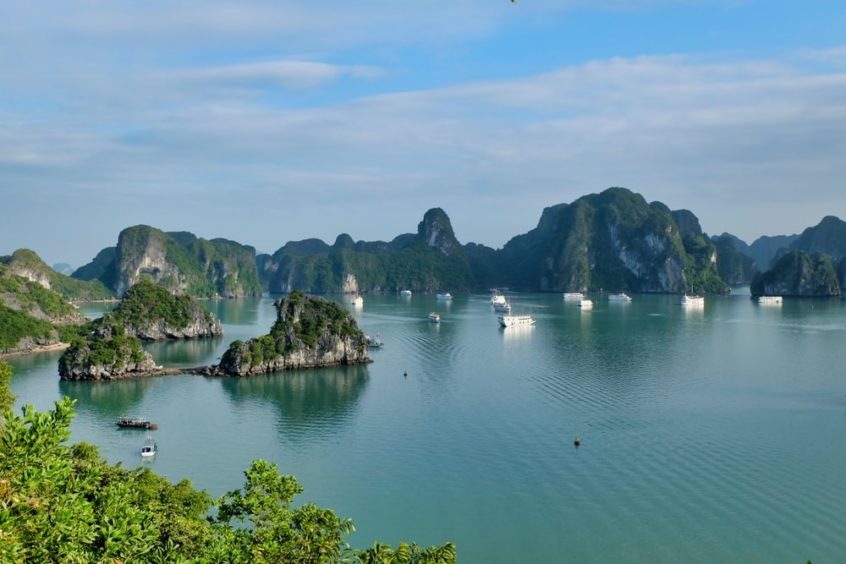
Vietnam is popular, not only for its exceptional cuisine, its fascinating history and its cheerful population, but also for its natural beauty.
Vietnam has countless bird species, mammals and insects, a diverse marine life and beautiful flora. In short, it’s a country you simply have to experience at least once in your life.
With an easy to navigate visa system, Vietnam is looking to be a prime destination for post-Covid travel.
In this article, we’ll go over five of Vietnam’s loveliest national parks to really get you in that travel mood!
1. Vu Quang National Park
The coast in the central north of the country hides a wealth of biodiversity: Vu Quang National Park. It is home to the Saola (also called the Asian unicorn since it’s unique and endangered), the giant muntjac and the black deer.
The long mountain ranges and slopes as well as the rivers and streams make it a perfect place for a walk. You may also encounter monkeys during your visit. Vu Quang is still relatively undiscovered by foreign tourists and therefore remains largely unspoilt.
It is recommended spending at least a whole day here to fully enjoy the scenery of the Truong Son Mountains. Take a walk and enjoy the scent of the flowers while watching the butterflies flying around.
The best time to visit the park is during the dry season, which starts in May and ends in late summer. A word of warning: when it rains, expect downpours in Vu Quang.
2. Cat Ba National Park
The island of Cat Ba and its national park are very popular with tourists because of its location close to the capital. You can reach this UNESCO-protected bay from Hanoi in just two hours by car.
You may have heard of it, but Halong Bay is one of Vietnam’s most popular attractions; this national park is connected to the bay from a geological and technical point of view.
Apart from the famous boat cruises, it’s also a great place for hiking! A five-hour trip will take you to a floating village and to Frog Lake. Cat Ba and Halong Bay cover a large area.
We recommend visiting Viet Hai, Trung Trang Cave and the town of Cat Ba, where you can taste delicious seafood. The best period to visit is February to May and from August to November.
3. Phong Nha-Ke Bang National Park
Phong Nha-Ke Bang, in Quang Binh province in central Vietnam, has a unique feature: it houses one of the largest caves in the world. Boat trips take you through more than 300 natural caves and caverns. Other popular activities include rock climbing and hiking through the forests.
Nevertheless, visiting this national park, which is named after the famous Phong Nha cave, is quite a challenge. This is mainly because of its location between the cities of Da Nang and Hanoi.
Most people first take a plane to Da Nang and then make the five-hour drive to Dong Hoi, which itself is about an hour from the park.
4. Bach Ma National Park
Located close to the city of Da Nang, Bach Ma consists of three separate areas, the centre of which is strictly protected.
Typical activities here are hiking to the waterfalls and climbing to the top of Mount Vong Hai Dai at 1,440 metres. Reaching the top accompanied by an ecotourist is the highlight of a visit.
If you want to visit Bach Ma National Park, you can take a plane to Da Nang. The park is about 60 kilometres from this city. You can also take part in an organised tour, rent a motorbike or try to get there by public transport.
5. Pu Luong Nature Reserve
The Pu Luong Nature Reserve is a real hidden gem in the north of Vietnam. Over the past few years, it has emerged as one of the country’s leading destinations for ecotourism.
Sustainable tourism is well organised here. The ethnic minority groups living in the park are actively involved with families staying there and take part in walking tours. There are various programmes to protect the local flora and fauna.
Pu Luong has a charming landscape with misty mountains, hamlets with wooden houses and large rice terraces.
The bamboo water mills that transfer the vital water from the streams to the rice fields are a typical feature of the park. Whichever corner of the park you visit, you will be treated to spectacular views.
Don’t forget to apply for your e-visa Vietnam!
Vietnam, like many countries, has a mandatory visa rule for foreign visitors. Fortunately, Vietnam’s visa application process is relatively simple. Since 2018, it has been possible to apply for the Vietnam visa online.
The Vietnamese embassy recommends applying for the electronic visa instead of a visa on arrival. The electronic Vietnam visa valid for 30 days, and applying for one is done by filling in the application form online. You will then receive your visa by email.
The advantage of the electronic visa is that you can be certain that you have a valid visa before you get on the plane, getting rid of any uncertainties on arrival in Vietnam. With an e-visa, you don’t have to queue up at the airport and you save the cost of the stamp in your passport for the visa on arrival.

Enjoy the convenience of having The Sunday Post delivered as a digital ePaper straight to your smartphone, tablet or computer.
Subscribe for only £5.49 a month and enjoy all the benefits of the printed paper as a digital replica.
Subscribe